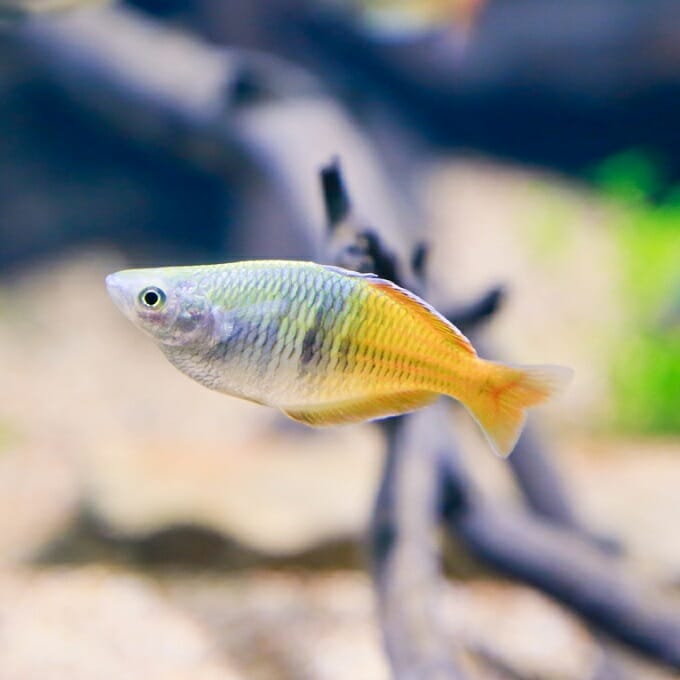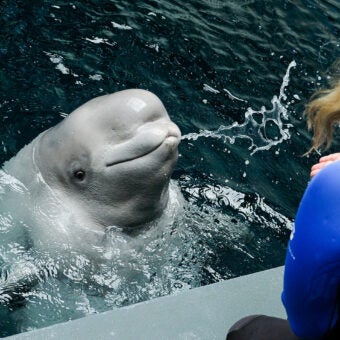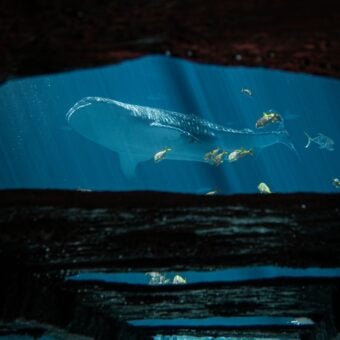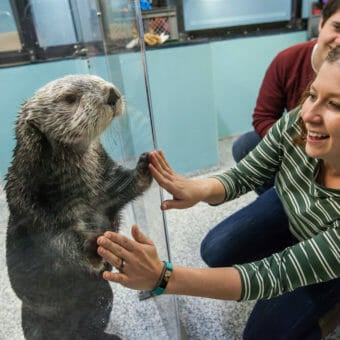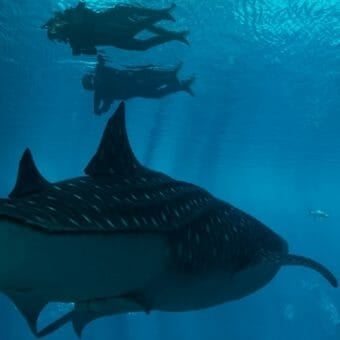-
Size
Up to 3.5 in (9 cm) -
Diet
Insect larvae and small crustaceans -
Range
Indonesia -
Habitat
Freshwater lakes
Physical Characteristics
- Maximum length of 3.5 in (9 cm) for males and 2.8 in (7 cm) for females.
- The body is deep, laterally compressed and oval-shaped.
- Mature male’s coloration is blue or bluish-grey, sometimes almost black on the head and the front portion of the body, with bright orange-red coloration on the fins and posterior half of the body. Just behind the pectoral fin, there are alternating light and dark vertical bars.
- Female displays a broad, dark, mid-lateral stripe accompanied by a series of narrow yellow or reddish-orange longitudinal stripes corresponding with each scale row.
- Females have a shallower body depth and smaller, more rounded fin edges.
Diet / Feeding
- Benthopelagic feeder.
- Also feeds on insect larvae and small crustaceans.
Range / Habitat
- Occurs in three freshwater lakes in the Ajamaru Lake region of western Papua New Guinea in Indonesia.
Reproduction & Growth
- Forms distinct pairs when mating.
- An oviparous, egg-laying species.
- Does not engage in parental care towards eggs.
- Eggs are attached to aquatic plants with adhesive threads or tendrils.
Conservation Status
- “Endangered” on the IUCN Red List.
Additional Information
- Melanotaenia boesemani is similar in appearance to Melanotaenia ajamaruensis.
- M. boesemani is easily differentiated from M. ajamaruensis by the number of soft rays on the second dorsal and anal fins.
- M. boesemani has 10-14 dorsal rays and 17-23 anal rays compared with 15-19 and 21-27 for M. ajamaruensis.

